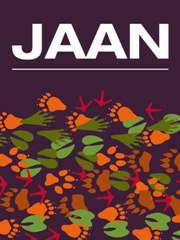Crossref Citations
This article has been cited by the following publications. This list is generated based on data provided by
Crossref.
Kettunen, H.
van Eerden, E.
Lipiński, K.
Rinttilä, T.
Valkonen, E.
and
Vuorenmaa, J.
2017.
Dietary resin acid composition as a performance enhancer for broiler chickens.
Journal of Applied Animal Nutrition,
Vol. 5,
Issue. ,
Sousa, Joana L. C.
Ramos, Patrícia A. B.
Freire, Carmen S. R.
Silva, Artur M. S.
and
Silvestre, Armando J. D.
2018.
Chemical Composition of Lipophilic Bark Extracts from Pinus pinaster and Pinus pinea Cultivated in Portugal.
Applied Sciences,
Vol. 8,
Issue. 12,
p.
2575.
Santovito, Elisa
das Neves, José
Greco, Donato
D’Ascanio, Vito
Sarmento, Bruno
Logrieco, Antonio Francesco
and
Avantaggiato, Giuseppina
2018.
Antimicrobial properties of rosin acids-loaded nanoparticles against antibiotic-sensitive and antibiotic-resistant foodborne pathogens.
Artificial Cells, Nanomedicine, and Biotechnology,
Vol. 46,
Issue. sup3,
p.
414.
Roy, Krisna
Lyhs, Ulrike
Vuorenmaa, Juhani
and
Pedersen, Karl
2018.
In vitro inhibition studies of natural resin acids to Clostridium perfringens, Staphylococcus aureus and Escherichia coli O149.
Journal of Applied Animal Nutrition,
Vol. 6,
Issue. ,
Vienola, K.
Jurgens, G.
Vuorenmaa, J.
and
Apajalahti, J.
2018.
Tall oil fatty acid inclusion in the diet improves performance and increases ileal density of lactobacilli in broiler chickens.
British Poultry Science,
Vol. 59,
Issue. 3,
p.
349.
Aguirre, Marisol
Vuorenmaa, Juhani
Valkonen, Eija
Kettunen, Hannele
Callens, Chana
Haesebrouck, Freddy
Ducatelle, Richard
Van Immerseel, Filip
and
Goossens, Evy
2019.
In-feed resin acids reduce matrix metalloproteinase activity in the ileal mucosa of healthy broilers without inducing major effects on the gut microbiota.
Veterinary Research,
Vol. 50,
Issue. 1,
Apajalahti, Juha
Vienola, Kirsi
Raatikainen, Kari
Holder, Vaughn
and
Moran, Colm A.
2019.
Conversion of Branched-Chain Amino Acids to Corresponding Isoacids - An in vitro Tool for Estimating Ruminal Protein Degradability.
Frontiers in Veterinary Science,
Vol. 6,
Issue. ,
Apajalahti, Juha
Vienola, Kirsi
Raatikainen, Kari
Kettunen, Hannele
and
Vuorenmaa, Juhani
2020.
Distribution, Metabolism, and Recovery of Resin Acids in the Intestine and Tissues of Broiler Chickens in a Feeding Trial With Tall Oil Fatty Acid-Supplemented Diets.
Frontiers in Veterinary Science,
Vol. 7,
Issue. ,
Uddin, Md Karim
Hasan, Shah
Mahmud, Md. Rayhan
Peltoniemi, Olli
and
Oliviero, Claudio
2021.
In-Feed Supplementation of Resin Acid-Enriched Composition Modulates Gut Microbiota, Improves Growth Performance, and Reduces Post-Weaning Diarrhea and Gut Inflammation in Piglets.
Animals,
Vol. 11,
Issue. 9,
p.
2511.
Lipiński, Krzysztof
Vuorenmaa, Juhani
Mazur-Kuśnirek, Magdalena
Sartowska-Żygowska, Katarzyna
and
Kettunen, Hannele
2021.
Dietary Resin Acid Concentrate Improved Performance of Broiler Chickens and Litter Quality in Three Experiments.
Animals,
Vol. 11,
Issue. 11,
p.
3045.
Kettunen, H.
Bento, M. H. L.
Lewis, E. A.
Remington, S.
Matthews, A.
Hendrix, S.
and
Vuorenmaa, J.
2022.
Tolerability of graded levels of tall oil fatty acids as a nutritional additive for broiler chickens: a 45-day target animal safety study.
British Poultry Science,
Vol. 63,
Issue. 6,
p.
847.
Mátis, Gábor
Mackei, Máté
Boomsma, Bart
Fébel, Hedvig
Nadolna, Katarzyna
Szymański, Łukasz
Edwards, Joan E.
Neogrády, Zsuzsanna
and
Kozłowski, Krzysztof
2022.
Dietary Protected Butyrate Supplementation of Broilers Modulates Intestinal Tight Junction Proteins and Stimulates Endogenous Production of Short Chain Fatty Acids in the Caecum.
Animals,
Vol. 12,
Issue. 15,
p.
1940.
TEKDEMİR, Ozan
ÖZÇELİK, Esher
ABAŞ, İsmail
and
ÖZSOY, Yıldız
2023.
In-vivo evaluation of an innovative feed additive formulation of Pinus Brutia Ten. resin containing turpentine and colophony and the effects on milk production performance and somatic cell counts of holstein dairy cows.
Journal of Istanbul Veterinary Sciences,
Vol. 7,
Issue. 1,
p.
1.
Middelkoop, Anouschka
Kettunen, Hannele
Guan, Xiaonan
Vuorenmaa, Juhani
Tichelaar, Ramon
Gambino, Michela
Rydal, Martin Peter
and
Molist, Francesc
2024.
Effect of dietary tall oil fatty acids and hydrolysed yeast in SNP2-positive and SNP2-negative piglets challenged with F4 enterotoxigenic Escherichia coli.
Scientific Reports,
Vol. 14,
Issue. 1,
Serra, Andrea
Foggi, Giulia
Buccioni, Arianna
Amarie, Roxana E.
Tinagli, Sara
Scicutella, Federica
Casarosa, Laura
Secci, Giulia
Mantino, Alberto
Mele, Marcello
and
Mannelli, Federica
2024.
Dietary supplementation with natural antioxidants: assessment of growth performance and meat quality in broiler chickens.
Poultry Science,
Vol. 103,
Issue. 3,
p.
103421.
Mahmood, Tahir
Vieco-Saiz, Nuria
Consuegra, Jessika
and
Mercier, Yves
2024.
Inclusion of slowly digestible starch source is a promising strategy than reducing starch to protein ratio in low protein broiler diets.
Poultry Science,
Vol. 103,
Issue. 9,
p.
104020.


